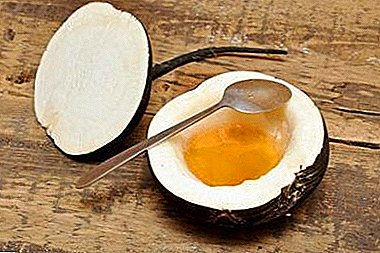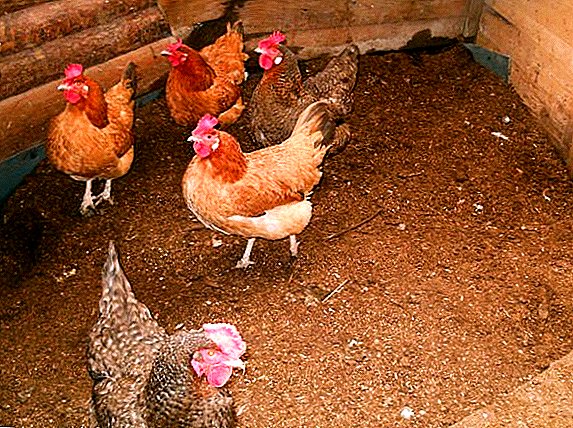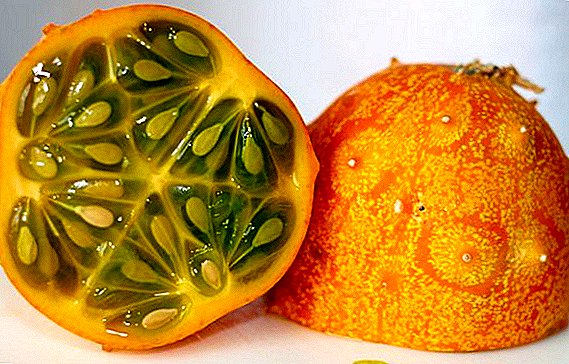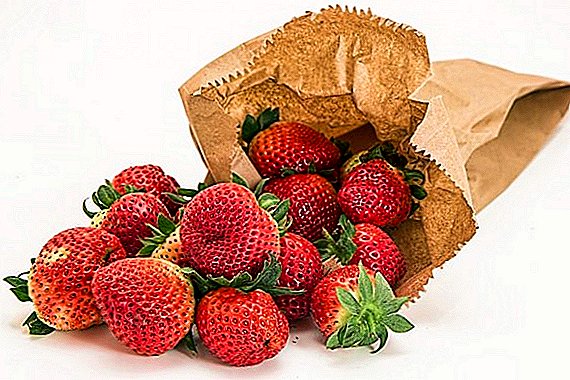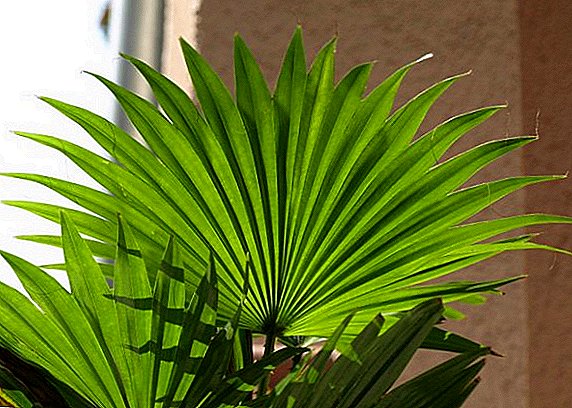 Canned stuffed pepper is one of the most popular and popular dishes in our country in the winter. However, it is almost impossible to get fresh, high-quality and tasty peppers at an affordable price in winter. In this case, the best solution will be harvesting peppers for winter stuffing. Cooking twist is simple and will be under force, even if you have no experience in blanks. Below are some simple step-by-step recipes.
Canned stuffed pepper is one of the most popular and popular dishes in our country in the winter. However, it is almost impossible to get fresh, high-quality and tasty peppers at an affordable price in winter. In this case, the best solution will be harvesting peppers for winter stuffing. Cooking twist is simple and will be under force, even if you have no experience in blanks. Below are some simple step-by-step recipes.
What pepper is better to take for stuffing
First of all, you need to give preference to a quality product. Several criteria that will help determine that you have a high-quality vegetable:
- Fresh pepper. It can be determined by slightly breaking the stem (so never buy fruit with a severed stem!). If the vegetable is fresh, droplets of fluid will seep from the fault. If you do not see them, the fruit was already long broken from the garden. Its taste has not changed from this, but the number of nutrients has decreased several times.
- Elasticity. When pressed, the fruit should not change shape. Its walls should be tight, dense, thick. The thicker the wall and the heavier the fruit, the more juice it contains.
- Colour. The richer the color, the more ripe the vegetable.
- The integrity of the skin. Avoid vegetables covered with spots, blotch, bloom, and injuries, as they are affected by fungal infection.
Important! It is not customary among our citizens to ask for documentation on vegetables, but in vain, because it contains such important information as the processing time and the types of chemicals used. Therefore, do not buy peppers in natural markets, and in stores do not hesitate to ask about quality certificates.
Requirements for the peppers themselves:
- correct form;
- large size (80-100 g or more);
- thick, fleshy walls from 4 mm;
- pronounced sweet taste with a slight bitterness.

Among the most suitable varieties for conservation are the following:
- "Adept". Early ripe sweet variety with fruit walls 6-6.5 mm thick. Fruit weight 100-120 g.
- "Bogdan". One more early ripe grade of sweet pepper with the long period of fructification. The fruits are quite large (200-250 g), the walls of the pepper up to 8 mm, while canning, they retain a beautiful shape and look very attractive in a jar.
- "Ideal". Early sugar variety with small fruits (up to 150 g).
- "Amber". Early ripe sweet variety. Small fruits of 100 g are distinguished by a rich orange color and juiciness, besides they have a high nutritional value.
You can use any variety that you like, which is available in the garden or tested for years.
Find out what useful and harmful properties the pepper has: green Bulgarian, bitter, jalapeno, cayenne.
Pepper preparation
To prepare the preform, you need to select intact and freshly harvested sweet peppers of the correct shape. Then comes a very important stage - thorough washing. You can also soak the peppers in lightly salty water for 30-60 minutes.
Important! Pepper takes the 3rd place in the "dirty dozen" - a list of fruits capable of accumulating pesticides and other toxic substances in large doses. Thorough washing will eliminate part of the chemicals and make the fruit safer.
Next, from the peppers you need to remove the part adjacent to the stem. It is not needed when stuffing, besides in this place the concentration of harmful substances is the highest. Peel the seeds. On this preparation of fruits for conservation is completed. 
Recipe 1
This recipe is extremely simple and quick to prepare. You will need a minimum of ingredients and only 1 hour of time to prepare peppers that will not taste like freshly harvested. The peculiarity of this recipe in the absence of vinegar among the ingredients.
Ingredients Required
Ingredients look forward to a can of 3 liters:
- 20 pcs. bell peppers of medium size (1.5 kg);
- 2 liters of water;
- salt (to taste).
Familiarize yourself with the recipes for preparing the winter for pepper: hot pepper, pickled Bulgarian, in Armenian.
Recipe
Phased billet preparation technology:
- Pour water into a saucepan and bring to a boil. Salt to taste (water should be moderately salty, as if you were cooking soup).
- Add peppers to boiling water and boil for exactly 5 minutes. They should warm up well, but not cooked.
- Remove the peppers and put in a jar, then you need to fill it with boiling water to the top and roll the lid, turn it over and cover with a blanket until it cools.



Despite the simplicity of preparation, several rules must be strictly followed in this recipe: the neck of the cans must be without any damage, and the peppers must be boiled for 5 minutes, no more, no less. Pour peppers need exactly boiling water. Before twisting the jars can not be sterilized, most importantly, they are well washed. You can store this workpiece in the basement or storeroom at room temperature.
Video: pepper preservation for stuffing
Did you know? Almost 90% of the products we buy undergo preliminary thermal and chemical treatments.
Recipe 2
This recipe is also easy to prepare, but here you must use some standard preservatives.
Ingredients Required
From the specified number of ingredients you can make two cans of 3 liters:
- 4 liters of water;
- 40-42 pcs. peppers (about 3 kg);
- 250 g of sugar;
- 250 g of vegetable oil;
- 250 g of vinegar;
- 3 tbsp. l salt.
At home, you can make vinegar from apples.
Recipe
The process of making the second recipe is as follows:
- Bring the specified amount of water to a boil, then add sugar, salt, vinegar and butter.
- Add pepper and simmer for 5-7 minutes.
- In the meantime, sterilize the jars and lids.
- When the pepper boils for a specified time, begin to lay it on the banks, trying to fill the voids as much as possible.
- When the jar is filled, fill it to the top with brine.
- It is necessary to roll up the covers, turn and wrap the banks.





There are several ways to sterilize cans: steamed, in an oven, microwave, steamer.
Video: pepper preservation with vinegar
Recipe 3
This recipe is the most original, because in addition to pepper tomatoes are added to the billet, which can then be used for stuffing.
Did you know? In the modern sense of conservation, billets appeared only in 1809. French pastry chef Nicolas Apper guessed to store various dishes in sealed iron and glass containers. They were very expensive and heavy, but they helped Napoleon’s army very much during the war.
Ingredients Required
The number of ingredients is designed for 2 cans of 3 liters:
- 3 liters of water;
- 45-50 pcs. peppers (depending on size);
- 4 tbsp. l vinegar (9%);
- salt and sugar to taste;
- celery bunch;
- a bunch of parsley;
- 1 kg of medium-sized tomatoes.
We advise you to get acquainted with the recipes of harvesting celery, parsley, tomatoes: green, cold pickled, and fermented; salad with tomatoes, cucumber and tomato salad, tomatoes in own juice, tomato juice, pasta, ketchup, tomatoes with mustard, "Yum fingers", adzhika.
Recipe
Phased pepper cooking technology:
- Boil water, add 1 tbsp. l salt.
- Add pepper and boil for 3 minutes.
- At this time, at the bottom of the jar add parsley stalks and celery. My tomatoes and cut into halves.
- After the specified time we take out the peppers and lay them on the banks, adding half a tomato to each pepper.
- Fill the jar with boiling brine, cover with lids and sterilize: lower for 30 minutes the neck in a large pot of boiling water.
- After this time we roll up the covers, turn over and wrap the cans.





Video: pepper preservation with tomatoes and celery
Why can lid swell
Unfortunately, sometimes after your efforts and the work you have done, you will find that the caps are swollen. It is important to study the possible reasons in order to avoid mistakes in the preparation:
- Poorly washed vegetables. This also includes the not completely removed spoiled parts of the peppers.
- Violation of temperature. It is necessary to fill in banks only with boiling brine, the water should be not just hot, but actively boil in a saucepan.
- Impaired tightness. Banks are not completely rolled up, air and bacteria seep through tiny gaps. Occurs due to the low elasticity of the gum or the presence of chips on the neck of the glass container. Also, the cover may simply be unevenly rolled up.
- Storing the workpiece at too high a temperature, in the sun. This contributes to the fermentation processes inside the tank.
Important! In no case should the product be eaten, if the lid on the jar is swollen, the brine has become turbid or has changed color, mold has formed. In such an environment, pathogenic microorganisms began to actively proliferate. The use of this product is fraught with severe poisoning, up to death.
Canned peppers for stuffing: reviews housewives
Nataly
And I have everything easier. I clean the seeds, put them in a bag and freeze them. Then I put minced meat right into the frozen one, pour it with sauce and into a pressure cooker. 20 minutes - and voila!

Tancheg
last year made such a pepper, and also all according to the recipe. When she faked up, she was upset. The taste of pepper is completely different, although of course it is clear - it is difficult to replace fresh pepper with something ... and since I made a lot of cans and it was a pity to throw it away, I added it to the hodgepodge, borscht, and even to the pizza. It was not bad, but I won't do it anymore ...

If you do not allow the above errors, your workpieces will stand at its best until they are submitted to the table. We hope that our simple recipes will help you to make the most delicious peppers, which with their taste will remind you of the sun, summer heat and abundance.


